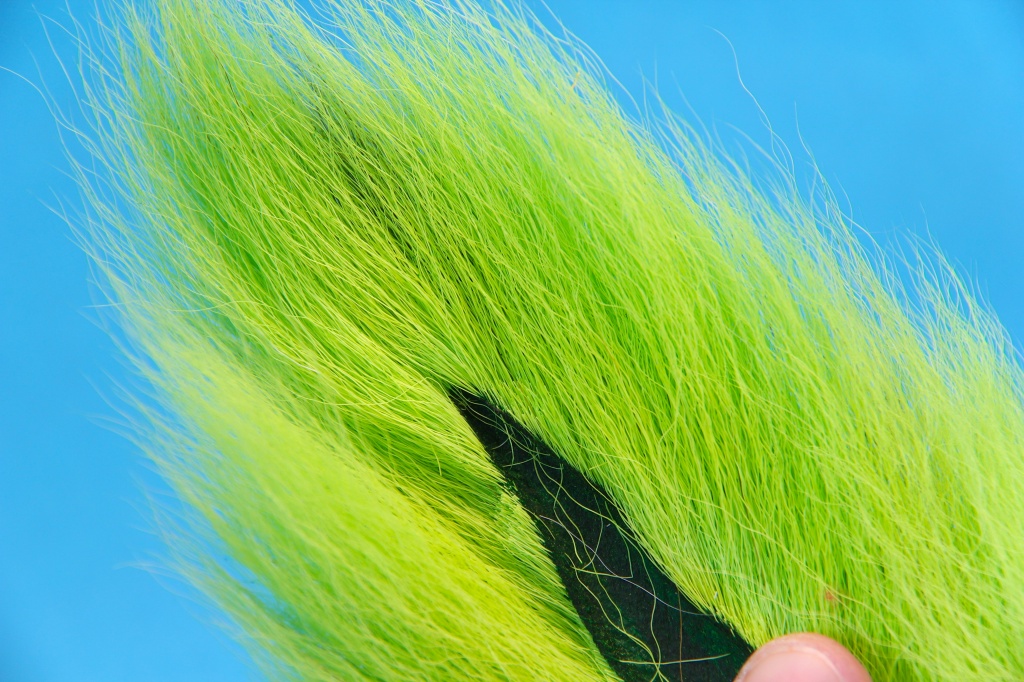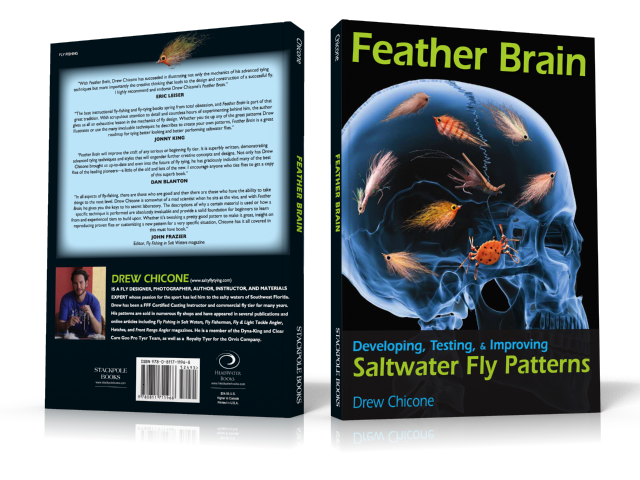Fur, hair, and feathers are the original saltwater tying materials, however there are hundreds of different synthetic materials to choose from today. Both have their pro’s and con’s, but it is important to take in to consideration the size of the flies you are trying to create when you are putting together your shopping list. When it comes to synthetics, think about the profile you want to create. I like thicker more coarse materials for larger 4-6 inch baitfish flies, and thinner more pliable materials for 1-3 inch baitfish flies. The length of the material, and translucency also need to be considered when making your selection.
This is the ninth installment of Feather Brain by Drew Chicone. To read more about Selecting Materals, Visit my website Salty Fly Tying to order your signed copy of Feather Brain today! $24.95 + Shipping
Although there are hundreds of different synthetic materials on the market today, don’t forget about natural materials when stocking up. Often times a combination of natural and synthetics materials is the best choice, and will give you the best of both worlds.
Over the next few months I will give you the basics on designing your own patterns, tying with saltwater materials, and fixing typical problems. I will also discuss my process for Developing, Testing, and Improving Saltwater Fly Patterns . As always, you can stay tuned to this blog each week as I share pieces from my book, but for the complete 176 page paperback copy of Feather Brain with step-by-step tying instructions and explanations of how I designed my 14 winning saltwater flies, and insights from nine top saltwater fly tiers, including Bob Clouser, Jonny King, Bob Popovics, and Chris Helm and many more.
Click on the book below to order your signed copy today!



